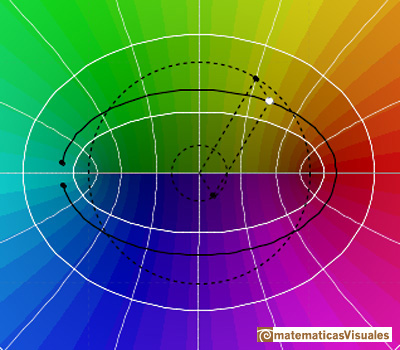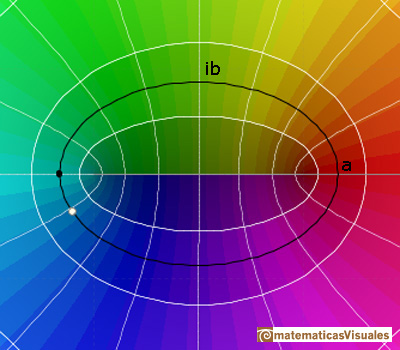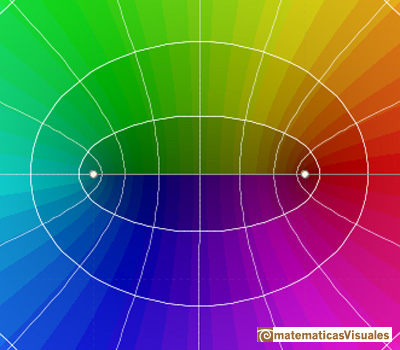
We already know that cos(z) is periodic with period  .
.
In this page we are going to explore how an horizontal line is transformed by the function cos(z), following Tristan Needham's Visual Complex Analysis.
Playing the animation we can see that the image of

is "some kind of symmetrical oval" (is just the sum of two circular motions).

To calculate where this oval hits the real axis, we consider

Then
The oval hits the real axis at this point:

To calculate where this oval hits the imaginary axis, we consider

Then
The oval hits the imaginary axis at this point:


The oval is a perfect ellipse. If we calculate
Using

Considering the real and imaginary parts

We can write
Which is the familiar representation of the ellipse, that we can write (implicit formula):
To calculate the foci of the ellipse we can use


The shapes of the ellipse change as we vary c but all these ellipses are confocal.
The image under cos(z) of a vertical line is an hyperbola with the same foci as the ellipse. Ellipses and hyperbolas meet at right angles.
REFERENCES
LINKS



















